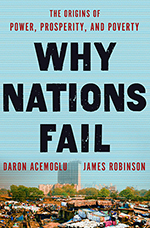Visualizing Inequality
 Two men, both in their forties, are sitting at their kitchen table late at night, nursing a drink. Both are laden with pressing anxiety. One is worried about a potential 500 million loss in his holdings. It is very big loss. It will make him a mere millionaire among his peer of billionaires. The other is worried about taking out a second mortgage on his house. It is the only way he can pay for his cancer treatments since he is without health insurance. He is worried about his wife, who would be left to make the payments if he does not survive.
The disparity between anxieties of these men is a reflection of the socio-economic disparity of the society to which they belong. How did this disparity in anxieties come about? Is it simply the cumulative result of their lifelong choices or do the social and political institutions of the society to which they belong play a role in the the intimate anxieties of these men?
Two men, both in their forties, are sitting at their kitchen table late at night, nursing a drink. Both are laden with pressing anxiety. One is worried about a potential 500 million loss in his holdings. It is very big loss. It will make him a mere millionaire among his peer of billionaires. The other is worried about taking out a second mortgage on his house. It is the only way he can pay for his cancer treatments since he is without health insurance. He is worried about his wife, who would be left to make the payments if he does not survive.
The disparity between anxieties of these men is a reflection of the socio-economic disparity of the society to which they belong. How did this disparity in anxieties come about? Is it simply the cumulative result of their lifelong choices or do the social and political institutions of the society to which they belong play a role in the the intimate anxieties of these men?
This is a visual and analytical interpretation of the causes of inequality based on the book Why Nations Fail by Daron Acemoglu and James Robinson. Acemoglu and Robinson argue that social and political institutions within a society are an important and often overlooked determinant of broader social inequality. To a large degree, levels of inequality within a country, can be understood by look at how institutions, public and private, affect the two key issues of Social Mobility and Wealth Distribution.
Institutions within a society can either facilitate social mobility by being Inclusive or limit the movement between economic classes and thus be Restrictive. Institutions can also divide wealth within a country in a way that favors the elites, thus being Extractive or ensure that wealth is actively shared by a larger share of the population, thus being Redistributive. Below is a list of the many mechanisms that make institutions either Inclusive or Restrictive in terms of social mobility, and Extractive or Redistributive in terms of wealth distribution.
<---Mobility--->
- Universal Education
- Democratic Institutions
- Fair Judicial System
- Universal Education
- Democratic Institutions
- Corrupt Judicial System
<---Distribution--->
- Progressive Taxation
- Anti-Monopoly Practices
- Free and Fair Labor Markets
- Regressive Taxation
- Corruption and Favoritism
- Restricted Labor Markets
Inequality as a Visual Metaphor
Part of the complexity of issue of inequality arises from the fact that in many parts of the world democratic institutions, which are inclusive can co-exist with corrupt judicial systems, which are restrictive and free public education, which is inclusive. To understand this issue better, it is possible to use a visual analogy of air molecules in a box separated into two chambers as a metaphor for a society where the total wealth of a society is represented by the total space of the box and molecules are its citizens. If we start with an unequal number of molecules in each chamber, the molecules will distribute themselves evenly between the two chambers over time. It is possible to simulate the effects of multiple combinations of institutions (inclusive and extractive vs. restrictive and redistributive) and chart the trajectory of inequality under these conditions.
Shake the browser to start the simulation.
Thinking Beyond Democracies and Dictatorships
Democracies are not an antidote to inequality anymore than authoritarian societies can be assumed to produce unequal societies. As Joseph Sitglitz points out, Singapore, a comparatively more authoritarian society than the US, has lower levels of inequality than the US. What really matters is how the various institutions within these countries affect social mobility and wealth distribution.
Based on what you know of the political and social structures of the countries listed below, see if you can rank them in terms of inequality with 1 being a more equal society and 4 being more unequal. Hit the submit when you are done to see the right answer. If you answered correctly, the graph will turn purple, without any pink or blue.
South Korea
Select a rank.
Ans: 2
OECD Gini Rank: 20
United States
Select a rank.
Ans: 4
OECD Gini Rank: 31
France
Select a rank.
Ans: 1
OECD Gini Rank: 12
Japan
Select a rank.
Ans: 3
OECD Gini Rank: 24